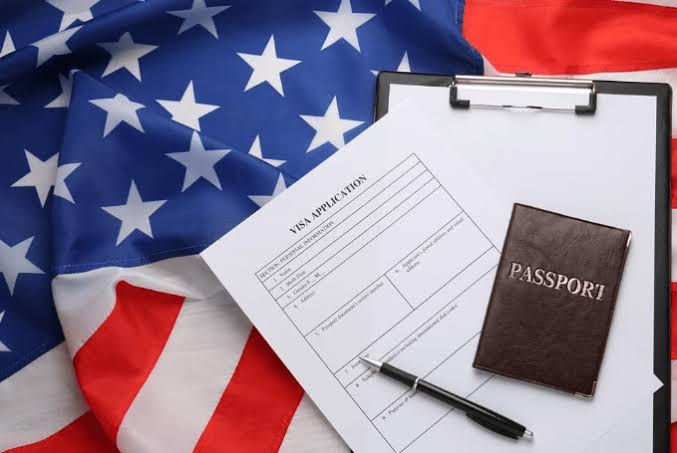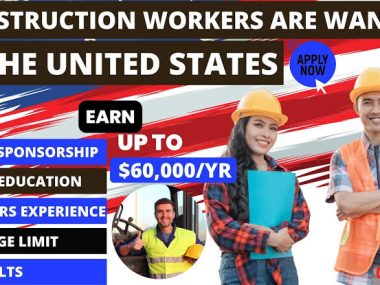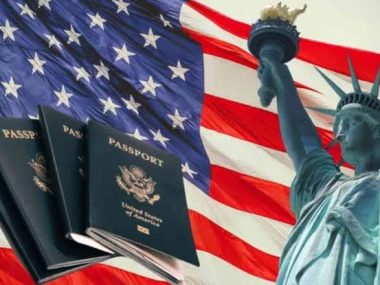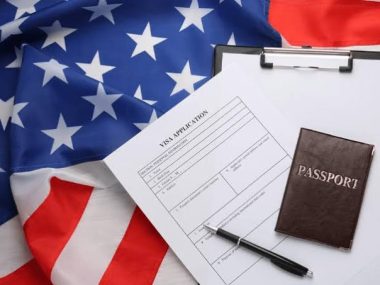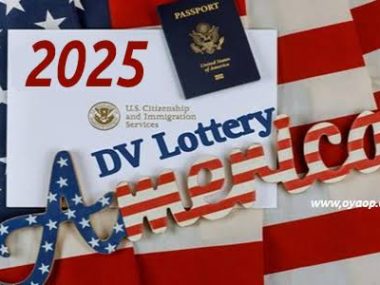$100K USA VISA SPONSORSHIP OPPORTUNITIES IN 2025/2026
—
Introduction
If you’re an ambitious professional outside the United States, landing a $100,000+ job with full visa sponsorship is one of the most strategic ways to relocate, build your career, and unlock better opportunities for yourself and your family. This isn’t just about dreaming of the American dream — it’s about understanding the evolving immigration system, targeting industries that actually sponsor, and positioning yourself to stand out in a global talent pool.
In this guide, you’ll get the facts: how the US visa sponsorship process works, which visas apply, which industries and companies are open to international talent, how to boost your chances of securing a six-figure salary, and what practical steps you must take now for the 2025/2026 hiring seasons. You’ll also see red flags and scams to avoid — because the last thing you want is to waste time or money chasing fake offers.
—
Understanding US Visa Sponsorship
What Does Visa Sponsorship Mean?
When a US company hires a foreign national, they often must “sponsor” that person for a work visa. This means the company files the paperwork and proves to the US government that:
There’s a legitimate job offer
The role cannot easily be filled by a qualified American worker
The candidate meets all eligibility requirements
Without sponsorship, a foreign worker cannot legally work in the US on a standard employment visa. Some visas allow self-petition (like EB-2 NIW), but most require an employer to back you.
Why $100K+ Matters
Certain jobs with higher salaries are more likely to justify visa sponsorship. They’re often in sectors where there’s a talent shortage: tech, engineering, health care, finance, academia, scientific research, and specialized trades.
For example, according to USCIS wage level data, an H-1B position in Silicon Valley or New York often starts at $80,000–$120,000 or higher. So targeting $100K+ is realistic for highly skilled roles — if you’re in the right field.
—
Most Common US Work Visas for International Professionals
1. H-1B Visa
What it is: The H-1B is the most well-known non-immigrant work visa for skilled workers. It’s used by employers to hire foreign workers in “specialty occupations” requiring a bachelor’s degree or higher.
Key facts:
Annual cap: 65,000 standard + 20,000 for US master’s degree holders
Application window: Starts in March every year (for work starting October 1)
Valid for 3 years, renewable up to 6 years
Employer must file a Labor Condition Application (LCA)
Prevailing wage rules mean salaries must meet local standards
Who hires H-1B? Top tech companies (Google, Microsoft, Amazon, Meta, Apple), consulting firms (Deloitte, Accenture, PwC), finance (Goldman Sachs, JPMorgan Chase), and healthcare providers.
2. L-1 Visa
What it is: For multinational companies transferring employees from foreign offices to US offices.
Key facts:
L-1A: For managers and executives (valid up to 7 years)
L-1B: For specialized knowledge workers (valid up to 5 years)
No annual cap
Company must have a qualifying relationship abroad
Best for: If you’re already working for a global firm, you can position yourself for an internal transfer. This is often more straightforward than an H-1B lottery.
3. O-1 Visa
What it is: For individuals with “extraordinary ability” in arts, sciences, education, business, or athletics.
Key facts:
No cap, can be renewed indefinitely
Must show proof of national or international acclaim
Often used by researchers, artists, athletes, or highly accomplished entrepreneurs
Why it works: No quota, so no lottery risk. But you must demonstrate you’re at the top of your field.
4. TN Visa
What it is: For Canadians and Mexicans under the USMCA (formerly NAFTA) agreement.
Key facts:
Quick processing
No annual cap
Certain professional occupations only (engineers, accountants, scientists, teachers, etc.)
Valid for 3 years, renewable indefinitely
5. EB-2 National Interest Waiver (NIW)
What it is: A self-sponsored green card option for professionals whose work benefits the US national interest.
Key facts:
No employer required (self-petition)
Must show advanced degree or exceptional ability
Long processing time, but leads to permanent residence
—
Industries with High-Demand $100K+ Visa Sponsorship Jobs
1. Technology and Software Engineering
The biggest driver of H-1B sponsorship. In 2024 alone, Amazon, Google, and Microsoft collectively filed thousands of H-1B petitions. Average base salaries for experienced software engineers: $120K–$180K.
Roles in demand:
Software developers
Data scientists
Cloud architects
AI/ML engineers
Cybersecurity specialists
High-intent keywords: “Software engineering jobs USA visa sponsorship”, “Tech companies that sponsor H-1B”, “Data scientist $100k USA work permit.”
2. Healthcare
Doctors, nurses, physical therapists, and specialized medical technologists are in constant demand. Visa sponsorship is more complex due to licensing, but large hospitals and staffing agencies have dedicated immigration lawyers.
Examples:
Registered Nurses (EB-3 green card sponsorship)
Physicians (J-1 waivers, H-1B)
Physical Therapists
3. Engineering
Civil, mechanical, electrical, and industrial engineers are needed for infrastructure projects, clean energy, aerospace, and advanced manufacturing.
Salary: $80K–$150K depending on experience.
4. Finance and Consulting
Top banks and Big 4 consulting firms are known for hiring globally. Typical roles include investment analysts, risk managers, and IT audit specialists.
5. Academia and Research
Universities frequently sponsor international faculty, postdocs, and researchers under H-1B, J-1, or O-1 visas. NIH and other research institutes often have O-1 eligible roles.
—
Top US Companies Known for Visa Sponsorship
If you want the highest chance of securing a $100K job with sponsorship, target companies with a proven record. Use the H-1B disclosure data available from the US Department of Labor.
Examples:
Microsoft
Amazon
Apple
Meta (Facebook)
Deloitte
Accenture
PwC
EY
IBM
Tesla
Intel
Oracle
Goldman Sachs
JPMorgan Chase
Mayo Clinic (for healthcare)
Cleveland Clinic
Search for “H-1B disclosure data” to see how many workers they’ve sponsored.
—
Where to Find These Jobs
1. Specialized Job Boards
Search on sites like:
MyVisaJobs.com: Shows employer sponsorship history.
H1BGrader.com: Analyzes visa sponsor trends.
LinkedIn: Use advanced filters like “Visa Sponsorship Available.”
Glassdoor & Indeed: Add “visa sponsorship” in your keyword.
Stack Overflow Jobs (for tech): Some listings include relocation packages.
2. Company Careers Pages
Many large companies explicitly mention “Visa sponsorship available” on job posts. Always read the job description and FAQs.
3. Global Mobility Programs
Big employers have internal mobility teams for transferring foreign staff. If you’re at a multinational, position yourself for an L-1.
—
How to Position Yourself
Having a degree is the baseline. But you must demonstrate unique value to stand out against local candidates.
1. Build In-Demand Skills
Stay updated on what skills command $100K+ salaries:
AI and Machine Learning frameworks
Cloud platforms (AWS, Azure, GCP)
Cybersecurity certifications
Project management (PMP, Scrum Master)
Medical specializations
2. Create an American-Ready Resume
US resumes are direct, one or two pages, with quantifiable achievements.
Example:
Bad: “Worked on various projects.”
Good: “Led development of a cloud application that saved $200K annually.”
3. Leverage Networks
Attend virtual job fairs
Join professional associations
Connect with alumni working in the US
Cold email hiring managers and recruiters (polite, targeted, value-driven)
4. Get a Credential Evaluation
If you studied abroad, a recognized credential evaluation helps prove degree equivalency.
—
Application Tips
1. Apply early: Many companies close H-1B submissions by February for the March lottery.
2. Be transparent: State you need sponsorship in your cover letter if asked.
3. Follow up: Recruiters are busy; polite persistence helps.
4. Watch out for shady recruiters: Never pay large upfront fees. Legitimate employers cover petition costs.
—
Salary Negotiation
Understand prevailing wages in your target city. Tech salaries vary:
Bay Area/Seattle: $120K–$180K for mid-level engineers
New York: $100K–$160K for finance and data
Midwest: Slightly lower, but cost of living is less
Use sites like Levels.fyi, Glassdoor, or PayScale to benchmark.
—
Avoid These Red Flags
“We guarantee a work visa for a fee” — likely a scam
Fake job offers from fake companies — verify the company on LinkedIn, Glassdoor, and the official H-1B disclosure list
Agencies that promise a “lottery slot” with no real job attached
Companies that pay you below prevailing wage — you can lose your status
—
Example of a $100K Visa Sponsorship Success Path
Case study: A software engineer in India built 3 years of experience, mastered cloud architecture, contributed to open-source projects, and built a GitHub portfolio. He targeted companies known for H-1B sponsorship, optimized his resume for US recruiters, cold-emailed recruiters on LinkedIn, and secured interviews with Amazon and Microsoft. He got an offer for $120K, passed the lottery, and now works in Seattle.
—
How to Stay Updated
US immigration policies change. Some administrations tighten quotas or add new criteria. Always follow:
USCIS.gov for official updates
Fragomen or BAL Global (top immigration law firms) for trends
LinkedIn groups focused on US immigration
—
FAQs
Q: Is it really possible to get a $100K job with sponsorship as a fresh graduate?
Possible, but rare. You usually need 2–5 years of experience plus skills that are hard to find locally.
Q: Can I pay an agent to find me a sponsor?
No reputable company asks for huge fees upfront. Real employers cover their own legal costs.
Q: What happens if I lose my sponsored job?
You usually have a 60-day grace period to find another sponsor or leave the US.
—
Actionable Steps
1. Identify your target industry and salary range
2. Build your portfolio and resume to US standards
3. Research companies that consistently sponsor visas
4. Apply early, using job boards and direct company pages
5. Use your network: alumni, LinkedIn, professional associations
6. Prepare for interviews — many include live coding or case studies
7. Secure legal advice if you get an offer
—
Final Thoughts
Getting a $100K USA job with visa sponsorship in 2025/2026 isn’t about luck — it’s about strategy, persistence, and positioning yourself as a candidate worth the investment. The market is competitive but open to those with the right skills, the right approach, and a realistic understanding of the process.
If you’re serious about making it happen, start now. Sharpen your skills, research employers, connect with insiders, and make your profile impossible to ignore.
—
Want More Help?
If you’re ready to take the next step: ✅ Subscribe for a free list of top visa-sponsoring companies
✅ Get our free resume and cover letter templates tailored for US jobs
✅ Book a strategy session with an immigration career advisor
Your American dream doesn’t have to stay a dream. Make it your plan.
—
Keywords sprinkled throughout:
“USA visa sponsorship jobs”, “$100k salary USA work visa”, “H-1B sponsor companies 2025”, “work permit USA 2026”, “apply for US work visa tech jobs”, “high paying USA immigration jobs”.
